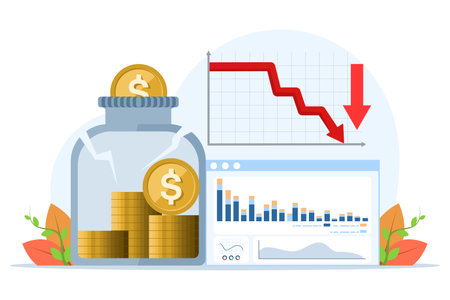Overview of Public and Private Pension Plans
When planning for retirement in the United States, understanding the distinction between public and private pension plans is crucial. Both types of plans serve as vehicles to provide financial security after you stop working, but they differ fundamentally in structure, funding, and administration. Public pension plans are typically government-sponsored programs designed to support individuals who have served in the public sector or meet certain eligibility requirements. The most prominent example is Social Security, a federal program that provides monthly payments to retirees, disabled individuals, and survivors based on their work history and contributions through payroll taxes. Additionally, many state and local governments offer their own defined benefit pension systems for teachers, police officers, firefighters, and other public employees. On the other hand, private pension plans are established by private employers or initiated by individuals themselves. The most common forms include 401(k) plans, which are employer-sponsored defined contribution accounts allowing employees to save and invest a portion of their paycheck before taxes, often with matching contributions from the employer. Another popular option is the Individual Retirement Account (IRA), which enables individuals to set aside money independently for retirement with certain tax advantages. These private solutions empower workers outside of the public sector—such as those employed by corporations or small businesses—to build their own retirement nest eggs. Ultimately, both public and private pension plans play vital roles in the American retirement landscape, but they operate under distinct rules and offer different benefits and risks that need careful consideration.
2. Pros of Public Pension Plans
Public pension plans, such as those provided by federal, state, and local governments, offer several significant advantages that differentiate them from private retirement plans. These strengths make them a preferred option for many American workers, especially those seeking stability and security in their retirement years.
Government Backing Ensures Stability
One of the most compelling benefits of public pension plans is the backing by government entities. Unlike private pensions, which may be susceptible to corporate bankruptcies or business downturns, public pensions are generally supported by tax revenues and legislative mandates. This governmental guarantee reduces the likelihood of default and provides participants with peace of mind regarding the continuity of their benefits.
Predictable and Defined Benefits
Public pension plans typically operate on a defined benefit model. This means retirees receive a predictable monthly income based on factors like salary history and years of service. Such predictability enables better long-term financial planning compared to defined contribution plans, where market fluctuations can significantly impact retirement outcomes.
Comparison: Public vs. Private Pension Plan Security
| Aspect | Public Pension Plans | Private Pension Plans |
|---|---|---|
| Backing Entity | Government (Federal/State/Local) | Private Companies |
| Default Risk | Low | Medium to High (dependent on company health) |
| Payout Predictability | High (defined by statute/formula) | Variable (dependent on plan type and investments) |
Lower Risk for Participants
The risk exposure for participants in public pension plans is generally lower than in private sector options. Investment decisions and funding responsibilities rest with the government or managing agency, not individual employees. As a result, public employees are shielded from market volatility and poor investment performance—risks often borne by participants in 401(k) or other defined contribution plans.
Key Takeaway:
The combination of government backing, reliable payouts, and reduced risk makes public pension plans an attractive choice for Americans who prioritize financial security and long-term stability in retirement planning.
![]()
3. Cons of Public Pension Plans
While public pension plans are widely recognized for providing stable, predictable retirement income, they are not without their drawbacks. One significant concern is the risk of underfunding. Many state and local government pension plans have faced persistent funding shortfalls due to optimistic investment return assumptions, inadequate employer contributions, or economic downturns that reduce asset values. This underfunding can jeopardize the long-term sustainability of promised benefits.
Another key disadvantage is the lack of portability. Public pensions are typically designed for employees who remain with a single employer—often a government agency—for much of their career. Workers who leave public service before vesting or before reaching retirement age may receive reduced benefits or lose out on valuable accruals altogether. This lack of flexibility can be especially problematic in todays job market, where career changes are more common.
Public pension plans also face risks associated with legislative changes and shifting demographics. As state and municipal budgets tighten, lawmakers may reduce future benefit accruals, increase employee contribution rates, or even alter cost-of-living adjustments (COLAs) to manage financial pressures. At the same time, aging populations and longer life expectancies place additional strain on these systems, increasing the likelihood of benefit reductions or restructuring. These factors introduce uncertainty for plan participants and complicate long-term retirement planning.
4. Pros of Private Pension Plans
Private pension plans, such as 401(k)s and Individual Retirement Accounts (IRAs), offer several advantages that make them an appealing option for American workers seeking flexibility and control in retirement planning. Understanding these benefits can help individuals make informed decisions regarding their long-term financial security.
Varied Investment Choices
One of the primary strengths of private pension plans is the wide range of investment options available. Participants can allocate their contributions among mutual funds, stocks, bonds, target-date funds, and other assets, tailoring portfolios to match their risk tolerance, time horizon, and retirement goals. This flexibility allows for personalized growth strategies that public pensions typically do not offer.
Investment Options: Private vs. Public Pensions
| Feature | Private Pension Plans | Public Pension Plans |
|---|---|---|
| Range of Investments | Broad (stocks, bonds, mutual funds, ETFs) | Narrow (managed by plan administrators) |
| Personal Selection | Yes | No |
| Risk Level Control | Individualized | Pooled/Set by fund managers |
Portability Across Employers
Unlike most public pension systems—which are often tied to a single employer or government entity—private pension plans are highly portable. Employees can roll over their accounts when changing jobs without penalty or loss of accrued benefits. This feature is particularly valuable in today’s dynamic labor market where career changes are common.
Individualized Account Control
Private pensions empower participants with direct oversight of their retirement savings. Individuals decide how much to contribute (within IRS limits), how to invest those funds, and when to make withdrawals after reaching eligible age. Account holders can adjust their strategies over time based on life events or market conditions.
Key Benefits at a Glance
- Diversification: Broader investment choices reduce risk through diversification.
- Ownership: Personal accounts belong to the individual—not the employer or state.
- Transparency: Regular statements provide clear information about account performance and fees.
- Flexibility: Contributions and investment strategies can be changed as circumstances evolve.
Together, these advantages make private pension plans a flexible and attractive solution for Americans who value autonomy in managing their retirement savings.
5. Cons of Private Pension Plans
While private pension plans offer flexibility and individual control, they also come with notable downsides that participants must carefully consider. One major concern is market risk. Unlike public pensions, which are often backed by government guarantees, private pensions—such as 401(k)s and IRAs—are directly tied to the performance of financial markets. This means that economic downturns or poor investment choices can erode retirement savings, potentially leaving retirees with less than expected.
Another significant drawback is less predictable payouts. Public pensions typically provide defined benefits, offering retirees a stable and predictable income stream. In contrast, most private pensions operate on a defined contribution basis, where the final payout depends on how much was contributed and how well investments performed over time. This unpredictability makes it challenging for individuals to plan for long-term expenses like healthcare, housing, or other retirement needs.
Furthermore, private pension plans require a higher degree of financial literacy among participants. Individuals are responsible for making critical decisions about their investments—such as asset allocation, risk tolerance, and withdrawal strategies—which can be daunting without sufficient knowledge or guidance. Mistakes or inattention can significantly impact retirement outcomes, especially given the complex tax rules and penalties associated with early withdrawals.
In sum, while private pension plans empower Americans with more control over their retirement savings, they demand careful planning and a willingness to shoulder greater risks. For many, these cons highlight the importance of education and professional advice when navigating the path to financial security in retirement.
6. Key Risks Facing Both Public and Private Pensions
Both public and private pension plans in the United States face significant risks that can threaten their sustainability and participants’ financial security. These risks are shaped by macroeconomic trends, demographic shifts, and ongoing regulatory changes—each carrying unique implications for retirement readiness.
Systemic Economic Risks
All pension systems are highly sensitive to economic volatility. Prolonged periods of low interest rates reduce the expected returns on pension investments, creating funding shortfalls. Inflation also erodes the purchasing power of pension benefits, while market downturns can significantly impact the asset values in both public and private funds. Economic cycles, such as recessions or unexpected global events (e.g., pandemics), may prompt plan sponsors to cut contributions or reduce future benefit accruals, increasing the risk of underfunding.
Demographic Shifts
The aging U.S. population is a central challenge for all pension plans. As baby boomers retire in large numbers, the ratio of active workers to retirees shrinks, placing added pressure on both pay-as-you-go public pensions and funded private plans. Increased life expectancy amplifies these pressures, as retirees draw benefits for longer periods than originally projected. For public pensions especially, these demographic changes can lead to escalating unfunded liabilities if contributions and investment returns do not keep pace with obligations.
Regulatory and Policy Risks
Pension plans must adapt to a complex and evolving regulatory environment. Changes in accounting standards, tax laws, or fiduciary regulations can have profound effects on plan funding strategies and sponsor obligations. For example, stricter funding requirements for private pensions under ERISA (Employee Retirement Income Security Act) can force companies to increase contributions during downturns. Public pension plans may face legislative reforms that alter benefit formulas or cost-sharing arrangements—sometimes retroactively—creating uncertainty for current and future retirees.
Plan-Specific Challenges
Public Pension Plans
Public sector pensions frequently encounter political risk: benefit promises may be increased without corresponding funding measures due to short-term policy priorities. Moreover, some states have constitutional protections for pension benefits, limiting flexibility in addressing funding gaps through reform.
Private Pension Plans
Private pensions face business-specific risks, such as employer bankruptcy or industry disruption, which can jeopardize plan solvency. While the Pension Benefit Guaranty Corporation (PBGC) provides some insurance for defined benefit plans, coverage is capped and does not extend to all types of retirement accounts.
Mitigation Strategies
Pension sponsors are increasingly turning to diversified investment strategies, liability-driven investing, and stress testing to address systemic risks. At the same time, policymakers are considering reforms aimed at improving funding discipline and transparency for both public and private systems.
Ultimately, understanding these key risks is essential for stakeholders—from plan participants to policymakers—to make informed decisions about long-term retirement planning and policy design in the changing U.S. pension landscape.
7. Long-Term Considerations for American Workers
For American workers navigating the landscape of public and private pension plans, making informed long-term decisions is more critical than ever. The traditional security once associated with defined benefit (DB) plans in the public sector faces mounting fiscal pressures and political scrutiny, while private-sector employees increasingly rely on defined contribution (DC) plans like 401(k)s that shift investment risk to individuals. Understanding these dynamics is essential for balancing retirement security with flexibility.
Assessing Security vs. Flexibility
Public pension plans typically offer greater predictability with guaranteed monthly payouts based on salary and tenure, but their future depends on sustained government funding and responsible management. Conversely, private pensions—particularly DC plans—provide more control over investments and greater portability across jobs, yet expose workers to market volatility and require proactive financial literacy. The key question for American workers: How much security are you willing to trade for flexibility?
Current Trends Shaping Retirement Planning
Several trends are reshaping the retirement landscape in the U.S.:
- Declining Availability of DB Plans: Fewer employers offer traditional pensions, pushing more responsibility onto workers to save and invest wisely.
- Increased Longevity: Americans are living longer, necessitating larger nest eggs and more robust strategies against outliving savings.
- Gig Economy Growth: More workers participate in freelance or contract work without access to employer-sponsored retirement benefits, further emphasizing individual planning.
Strategies for Informed Decision-Making
To navigate these complexities, American workers should:
- Diversify Retirement Savings: Combine public pension entitlements (if available) with personal 401(k), IRA, and taxable account contributions.
- Monitor Plan Health: Regularly review both employer-sponsored plan performance and the fiscal health of any public pension promises.
- Pursue Financial Education: Stay updated on tax laws, Social Security projections, and investment best practices relevant to retirement.
- Seek Professional Advice: Consulting with a fiduciary advisor can help tailor a strategy that matches personal goals, risk tolerance, and evolving economic conditions.
The future of retirement planning in America will likely require even greater self-reliance. By staying informed about both public and private pension risks—and by proactively diversifying assets—workers can position themselves to balance stability with adaptability as they prepare for a secure retirement.


